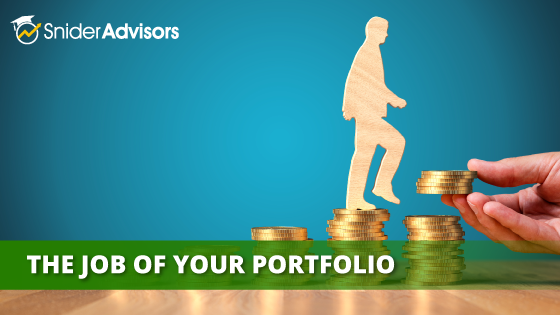In our continuation of the discussion of Snider Advisors’ Guiding Principles, we will examine the principle that the number one job of your portfolio is to produce a paycheck.
ERISA Changed Everything
While many of us were still too young to know why we should care, the rules of retirement changed significantly. When Congress passed the Employee Retirement Income Security Act of 1974, better known as ERISA, the burden and risk of providing income for retirement shifted away from your employer and directly onto you, and the inevitable and uncertain reliance on 401(k) plans and IRAs began.
Investing for Capital Appreciation
For the last forty years, the focus of most investors has been capital appreciation, commonly referred to as buy and hold. Capital appreciation investing is when you buy something in hopes it will go up in price. When it does, you sell it for more than you paid for it, and the profit is called capital appreciation.
When you invest for capital appreciation, you (and your portfolio) are held hostage to market conditions. The closer you get to retirement, the more you find yourself panicked about the stock market, the economy, the dollar, and geopolitics.
Reverse Compounding
To make matters worse, you must consider the impact reverse compounding could have on your portfolio. You’re familiar with the power of compounding right? The bad news is compounding is equally as powerful in reverse.
Let’s say that you have a $100K stock portfolio and in the midst of a bear market, it loses 50% of its value. How much does it have to go up to get back to $100K? 100%! It has to double! That’s reverse compounding.
The challenge is that approximately one out of every five years in the stock market is a down year – and with a capital appreciation approach, you have to sell off assets to generate income. In other words, in order to actually live off your portfolio, you are going to have to sell your holdings at a loss on a fairly regular basis.
Moreover, if those losses occur in the wrong order, it dramatically increases the chances of what academics call “retirement ruin” – a nice euphemism for running out of money before you run out of breath. Getting a good night’s sleep? Good luck!
Cash Flow Investing
But what if there was a way to mitigate the damage of reverse compounding? What if you could generate income from your portfolio other than selling off your assets? That’s called cash flow investing.
Cash flow is money that comes to you while you still own the asset. The key characteristic of cash flow is that you do not have to sell the asset in order to make money.
Think about this – most companies don’t go bankrupt because they are not profitable. They don’t go bankrupt because the value of their assets has declined. They go bankrupt because they do not have sufficient cash flow to pay their creditors. A company can lose money on paper but stay in business indefinitely so long as it has sufficient cash flow to meet its obligations. But without cash flow to pay employees, suppliers, and creditors, a business’ days are numbered.
Cash Flow is Your Lifeblood
The same is true of you. Most families that declare bankruptcy do so because the incoming cash flow, from paychecks and other sources, is not sufficient to pay the bills. But as long as cash flow exceeds monthly obligations, a family is fine.
Cash flow is the lifeblood of your family. So doesn’t it make sense that the number one job of your portfolio must be to create sufficient cash flow to meet your financial obligations?
It’s simple math; if your monthly living expenses are $7,000 a month and your portfolio produces $10,000 a month in cash, you are able to maintain your desired standard of living, keep up with inflation, pay your taxes, and be prepared for emergencies.
The Number That Matters
Don’t be fooled into thinking the most important number in investing is the one at the top of your account statement. This is a “paper” number that fluctuates so dramatically, unless you’re saving or investing for a single, large lump sum purchase, its value is essentially meaningless.
The number that really matters is the actual spendable income, or cash flow, your portfolio can produce. Cash flow is the key to viability.
With cash flow investing, because you don’t have to sell anything to pay your bills, you no longer have to be obsessed with declines in the markets or the issues around them. You can afford to wait out the markets ups and downs.
Read about another Guiding Principle, You Alone Are Accountable For Your Financial Situation
